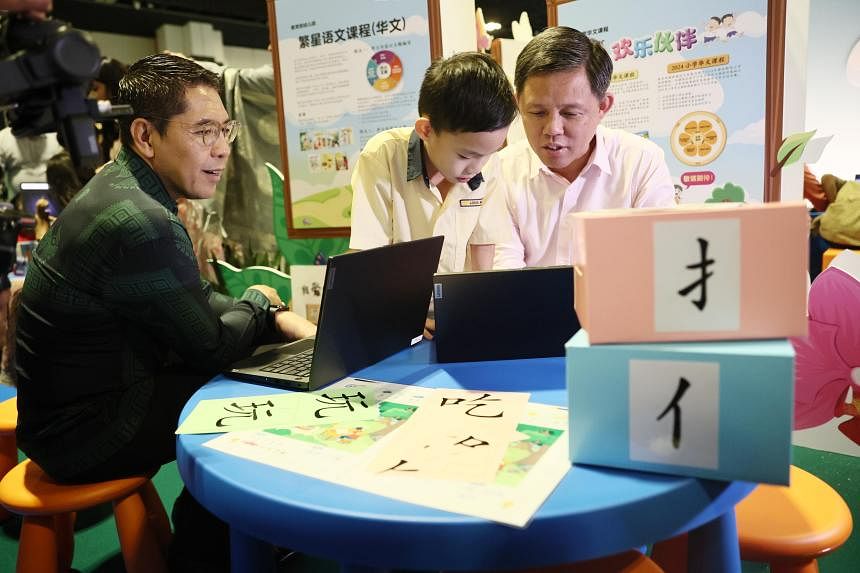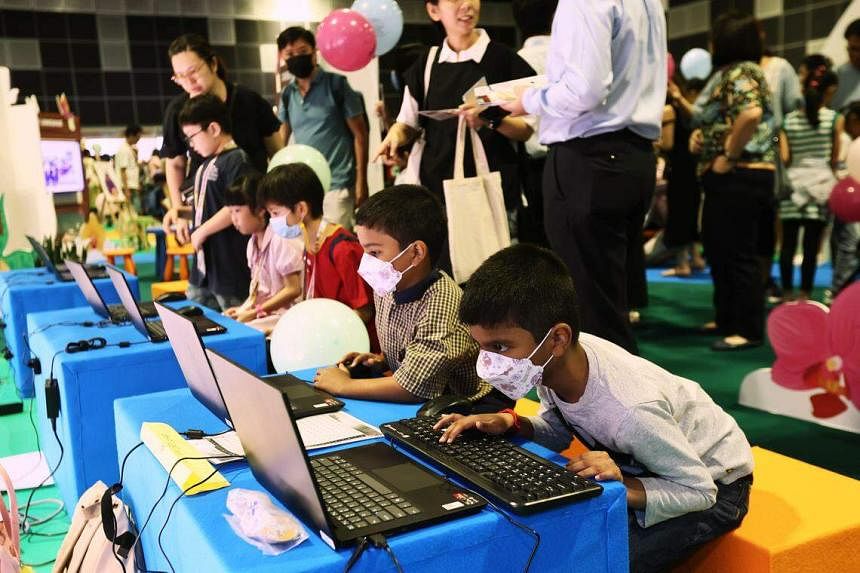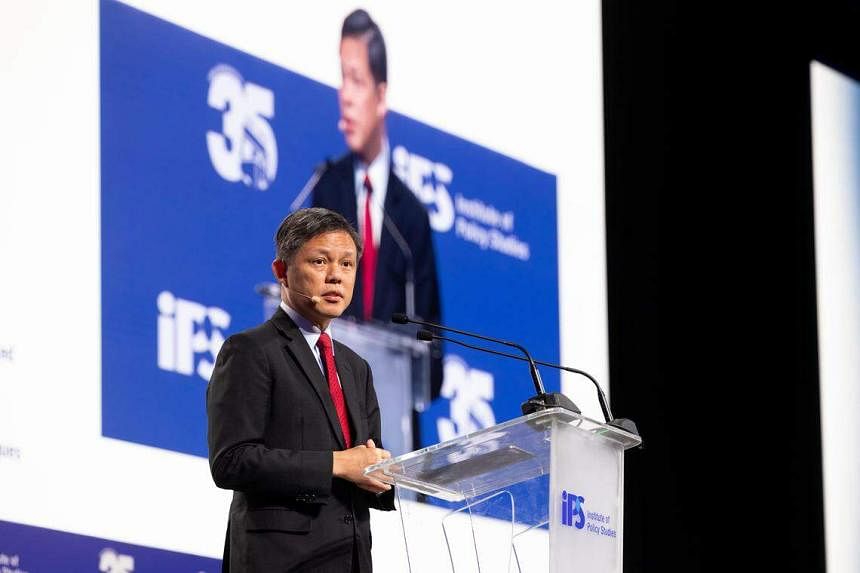from straitstimes.com:
New curriculum for mother tongue languages for Primary 1 pupils from 2024
A pupil showing Education Minister Chan Chun Sing (right) and Second Minister for Education Maliki Osman a hanyu pinyin game that will be used in the new curriculum, at the Mother Tongue Languages Symposium 2023 on Saturday. ST PHOTO: KELVIN CHNG
Amelia Teng
Education Correspondent
UPDATED
26 AUG 2023, 6:34 PM SGT
FacebookTwitter
SINGAPORE – Animated videos, online games and augmented reality will be featured more prominently in mother tongue lessons for Primary 1 pupils from 2024, as part of a refreshed curriculum announced by Education Minister Chan Chun Sing on Saturday.
Pupils will have more avenues to use their mother tongue languages in day-to-day contexts, such as when buying food in the canteen and writing social media posts.
The new curriculum, which will be implemented progressively starting with the Primary 1 cohort in 2024, aims to promote cross-cultural literacy.
For example, in the Primary 1 Malay textbook, pupils will be introduced to popiah, a Chinese spring roll that has become a local favourite, as well as to lumpia, the Filipino version of spring roll.
“Through these examples, students will better appreciate cross-cultural similarities and better connect with their friends in the region,” said Mr Chan.
The Ministry of Education (MOE) carried out a pilot of the refreshed curriculum in 2023 across 10 schools for Chinese language, 10 schools for Tamil and 16 schools for Malay.
The latest curriculum builds on the 2015 iteration and will feature greater use of technology, such as in the learning of hanyu pinyin and in tongue placement animations for Tamil.
MOE said it will continue to guide teachers in using technology, including artificial intelligence (AI) tools such as ChatGPT, in teaching and learning.
Speaking at the Mother Tongue Languages Symposium held at the Suntec Singapore Convention and Exhibition Centre, Mr Chan said the new curriculum will place greater focus on helping pupils learn and use their mother tongue languages in and outside of the classroom.
Pupils will learn through a mix of visual, auditory and kinaesthetic means, he added. For instance, for Chinese language, they could read e-books with interactive functions and digital narration at home or play games that improve word recognition.
An electronic Tamil reading pen has also been created to help pupils learn the correct pronunciation of words, while pupils can learn Malay through songs and body movement activities during lessons.
Mr Chan said MOE is working with industry partners to develop an AI solution for children learning oracy skills for their mother tongues in out-of-school contexts.
Being bilingual is an important part of the Singapore identity, he said. Yet remaining proficient in mother tongue languages has been a challenge as Singapore has seen a shift to English as the language most frequently spoken at home in the past decade.
“Many parents value the importance of bilingualism, but struggle to create conducive environments for their children to develop bilingual capabilities,” he added.
“If we do not do anything, we will start to lose our bilingualism edge,” he said, encouraging parents to devote more time to the mother tongue languages in their children’s early years.
The new curriculum, which will be implemented progressively starting with the Primary 1 cohort in 2024, aims to promote cross-cultural literacy. ST PHOTO: KELVIN CHNG
Madam Li Huan, 49, head of department for mother tongue language at Elias Park Primary School, one of the pilot schools, said the latest curriculum allows for more self-directed learning as pupils can use digital resources at home.
For instance, they will have more interactive resources to recognise Chinese characters or learn hanyu pinyin, which is necessary for them to expand their vocabulary and read more extensively, she said.
Mr Thiagarrajan, 52, a parent whose Primary 1 son was part of the pilot at Anderson Primary School, said he is glad that pupils are encouraged to speak their mother tongue language in daily life. His wife speaks in English to their two sons, aged seven and five, while he speaks in Tamil to them.
“My son used to be quite shy using Tamil in public, but he’s improving and is now more confident,” said Mr Thiagarrajan, who is self-employed and goes by one name. “He enjoys using technology, which has sped up his learning process, although we also try to control that as it shouldn’t replace real-life learning.”
He added: “Language has to evolve to stay alive, including the methods by which it is taught to students.”



 We can empower each other to contribute to Singapore in our own unique way, regardless of our different abilities and needs.
We can empower each other to contribute to Singapore in our own unique way, regardless of our different abilities and needs.
















































































